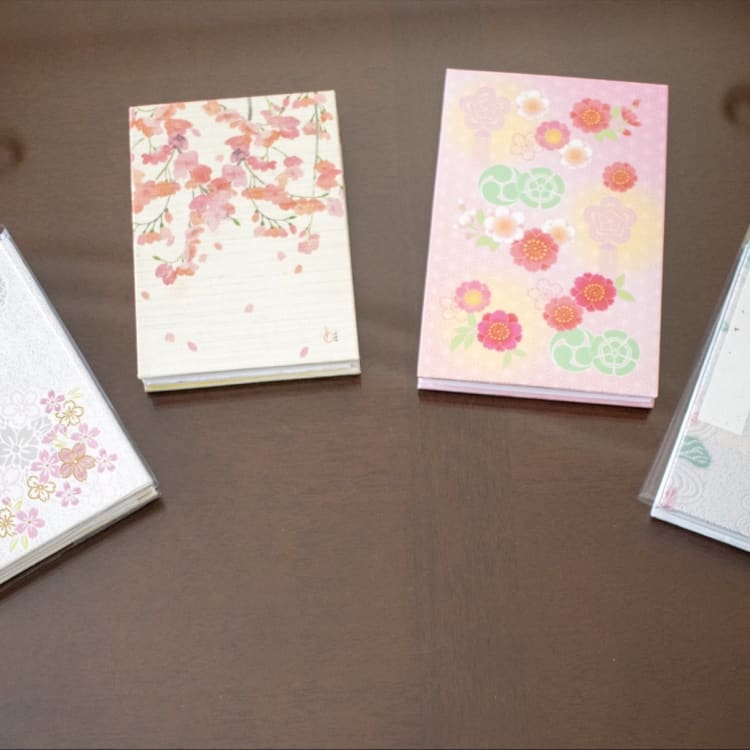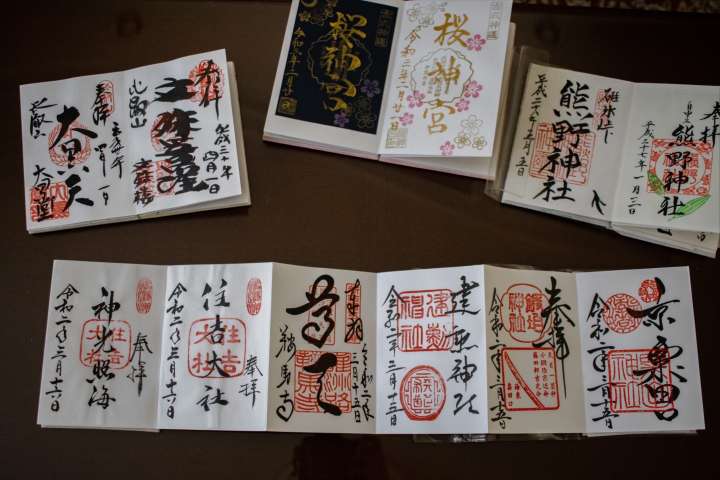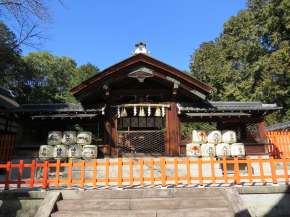
Story
Collecting Sacred Memories Across Japan’s Shrines
Goshuin: Traditional Japanese Shrine Seals
By JNTO On May 3 2021
When you visit a shrine or temple in Japan, there would usually be amulets you can bring home with you, not just as a souvenir but also as a blessing or protective charm. These include amulets like the ema (a wooden votive tablet where you write your wishes), the omikuji (fortune-telling paper strips), and the omamori (woven charms offering protection or luck).
There is also another keepsake – the goshuin. These are seals handwritten by monks, containing symbolic, religious, and historical meanings.
What is a goshuin?
Much like stamps you can collect from train stations and tourist landmarks, a goshuin is a symbol that connects you to a shrine you have visited, all recorded in a book called a goshuincho. The seals serve as proof of pilgrimage, so a completed goshuincho is purported to give a sort of spiritual fulfilment. In these days however, the journey to collect the goshuin itself is normally seen as the most important part rather than the completion of it.


Goshuin are customised by a Buddhist monk or Shinto kannushi (shrine keeper), and usually contain the date of your visit, the name of the shrine/temple written in Japanese calligraphy, and a stamp of the shrine/temple. Each establishment has their own distinctive goshuin design and calligraphy style.

You can start collecting goshuin by first picking up a goshuincho from a shrine or temple, and many have their exclusive designs which normally cost around ¥1,000 to ¥1,500. To get your goshuin, simply hand over your goshuincho to the attendant manning the goshuin counter and pay the fee, which usually costs around ¥300 to ¥500. Depending on the crowd, you may get to watch the calligrapher at work and receive your seal right away, or you’ll be given a ticket to collect your seal later.
Here are some popular temples and shrines where you can collect both the goshuin and goshuincho.
Meiji Shrine, Tokyo
Situated within a thick wooded forest in the middle of metropolis Tokyo is Meiji Shrine, where several million people perform their first shrine visit of the year. It was established in 1920, dedicated to the deified spirits of Emperor Meiji and his consort, Empress Shoken, who were the first emperor and empress of modern Japan.


The approximately 100,000 trees that make up Meiji Jingu's forest offers an air of tranquillity distinct from the surrounding city. The shrine’s Inner Garden is a popular place to visit especially in June when the irises are in bloom. The approach to the shrine is lined with rows of stacked sake and wine barrels, as Emperor Meiji was said to have had a taste for wine. The giant torii gate marking the entrance to the shrine grounds is the largest wooden Myojin-style torii gate in Japan.


A Meiji Jingu goshuincho with its original design is available for ¥1,000, and a goshuin here is ¥500.
Access: Meiji Jingu is a 10-minute walk from both Harajuku Station and Yoyogi Station
Website: Official Website
Kenkun Jinja, Kyoto
Established in 1869 by decree of Emperor Meiji, Kenkun Shrine was built to venerate the spirit of Lord Oda Nobunaga, a 16th century warlord who helped to unify Japan during its Warring States era. Situated on the summit of Mt. Funaoka, the short hike to the shrine takes you out of the city into an unhindered view of Kyoto spread out beneath the mountain.


At the worship hall, you can find an offertory box with a haraigushi wand, often used for purification. Resembling a brush with white paper strips, visitors are welcome to perform the ritual on themselves by waving the wand in both left and right directions while carrying grateful thoughts.


Kenkun Jinja offers several different designs of the goshuincho, ranging from ¥1,200 to ¥3,000. Several options of goshuin are also available, with the basic goshuin starting at ¥300, with options to add a shrine pin (¥500) and a clip (¥700) to your seal.
Access: Kenkun Jinja is a 10-minute walk from Kenkun Jinja-mae Bus Stop or Funaokayama Bus Stop, both serviced by City Bus
Website: Official Website
Dazaifu Tenmangu, Fukuoka
Tenmangu Shrines are dedicated to the spirit of Sugawara Michizane, a scholar of the Heian Period associated with Tenjin, a Shinto deity of education. As such, Tenmangu Shrines are popular among students, and one of the most important in all Japan is Dazaifu Tenmangu in Fukuoka.

Dazaifu has 6,000 plum trees decorated around the shrine grounds, planted in honour of Michizane who was fond of them. In the teahouse on the shrine grounds, you can enjoy a traditional sweet called umegae-mochi (toasted rice cake with red bean paste filling) which is stamped with a plum blossom crest, a symbol of Dazaifu Tenmangu.


Even the goshuin from Dazaifu Tenmangu has a seal featuring a pretty plum blossom pattern at the centre, while its limited-edition goshuincho (¥2,500) has pink plum blossoms prints and Japanese nightingales designed by a renowned textile artisan.
Access: Dazaifu Tenmangu Shrine is a five-minute walk from Dazaifu Station.
Website: Official Website
















































